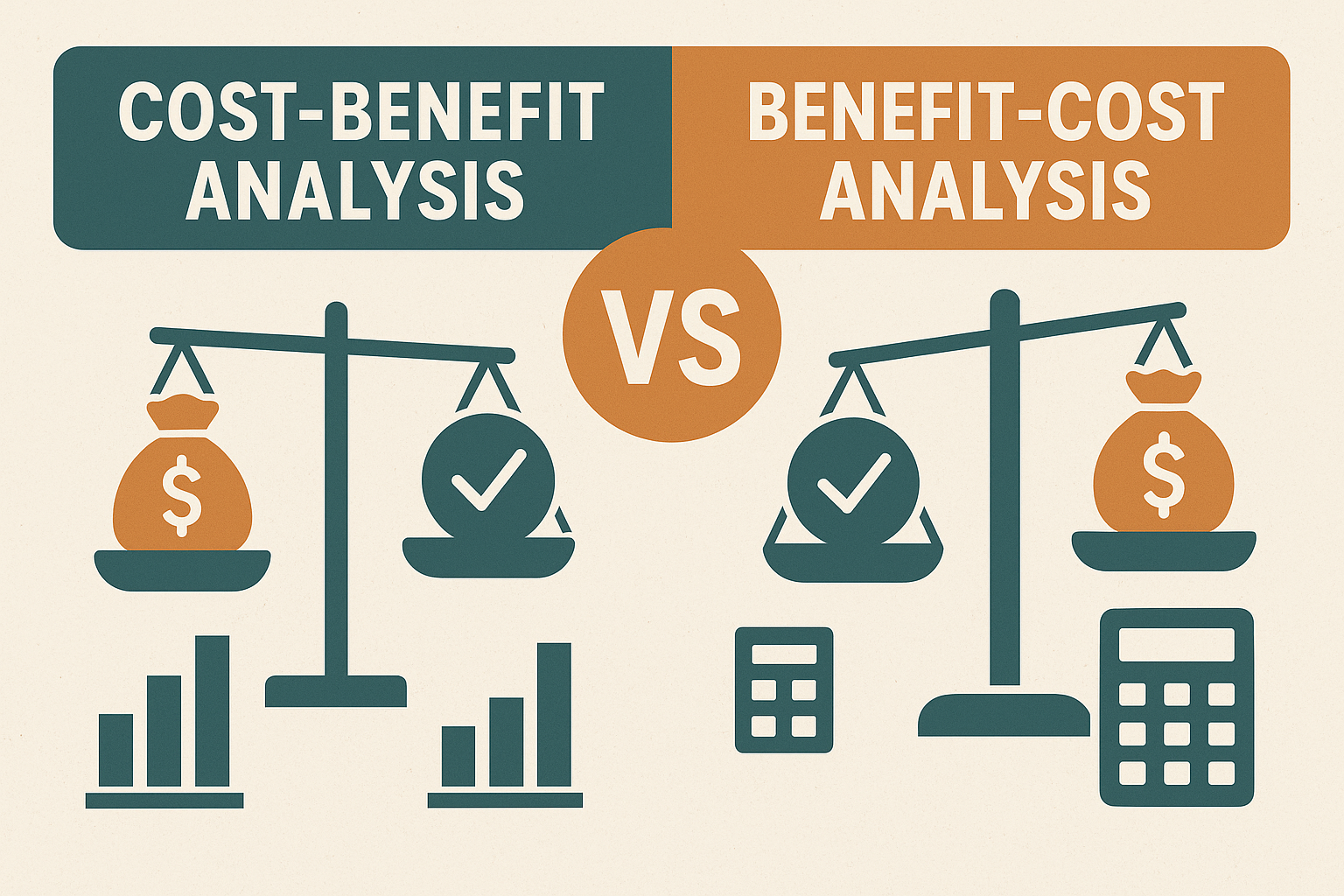When tackling projects, making decisions, or assessing policy options, individuals and organizations often find themselves needing to evaluate whether an initiative is worth pursuing. Two common terms that come up in these situations are Cost-Benefit Analysis (CBA) and Benefit-Cost Analysis (BCA). Though they may sound different at first glance, these terms refer to the same method of evaluation.
Let’s dive into why these two concepts are often used interchangeably—and how they serve the same purpose.
What is Cost-Benefit (or Benefit-Cost) Analysis?
At its core, Cost-Benefit Analysis and Benefit-Cost Analysis are frameworks for evaluating the potential costs and benefits of a decision, project, policy, or investment. Both methods aim to compare the total expected costs of an action with the total expected benefits to determine whether it’s a worthy investment.
The goal is to weigh the costs (resources spent—time, money, and other inputs) against the benefits (returns, positive outcomes, or improvements) to assess whether the benefits justify the costs. In other words: does the action create enough value to be worth pursuing?
Why Both Terms Exist
1. Historical and Conventional Usage
Cost-Benefit Analysis (CBA) has been used longer in many academic and policy contexts, especially in economics, where the “cost” aspect was traditionally emphasized.
Benefit-Cost Analysis (BCA) has gained traction in fields like environmental economics and public policy, where the emphasis is often on maximizing societal benefits.
2. Emphasis
The word order might reflect which aspect is being prioritized. If the concern is justifying costs based on benefits, cost-benefit is often used. If the focus is evaluating benefits relative to the costs, benefit-cost might be preferred.
3. Regional or Institutional Preference
Certain academic institutions, governments, or industries may have a preferred term. For example, some regulatory bodies may standardize on one version over the other.
4. Clarity in Communication
Some practitioners prefer benefit-cost analysis because it reads more smoothly in certain contexts, or better aligns with their methodological structure (e.g., listing benefits first).
How Do They Work?
Regardless of the terminology, the process of conducting a CBA or BCA typically follows these steps:
1. Identify Costs and Benefits
List all potential costs (e.g., monetary, time, resources) and benefits (e.g., economic returns, social value, environmental improvements). Importantly, these don’t need to be limited to “traditional” financial items—intangible factors matter too.
2. Monetize the Costs and Benefits
Assign a monetary value to each cost and benefit. While this is straightforward for tangible items (e.g., expenses), it’s more complex for intangibles (e.g., quality of life, environmental impact). Still, these should be included to create a well-rounded analysis.
3. Analyze the Net Benefit
Subtract the total costs from the total benefits to see whether the benefits outweigh the costs. If so, the project or decision is likely worthwhile.
4. Conduct Sensitivity Analysis
Evaluate how changes in key assumptions—like cost estimates or benefit projections—might affect the results. Sensitivity analysis ensures the conclusions remain valid under different scenarios.
Why Use Cost-Benefit or Benefit-Cost Analysis?
Whether you call it CBA or BCA, this framework helps decision-makers:
Ensure Efficient Use of Resources
Compare options to allocate time, money, and effort where they’ll yield the most value.Promote Transparency
Provide a clear, quantifiable rationale for decisions—especially important for stakeholders and regulators.Support Objective Decision-Making
Remove guesswork by using a structured, data-driven approach.Optimize Outcomes
Maximize impact by identifying the highest-benefit actions relative to their cost.
The Bottom Line: They’re the Same!
Despite the difference in phrasing, Cost-Benefit Analysis and Benefit-Cost Analysis are functionally identical. The variation is stylistic, not methodological. Both are used across industries to guide informed, resource-efficient decision-making.
So, whether you say CBA or BCA, you’re conducting the same kind of evaluation: determining if a project or decision is worth the investment. And in the end, what really matters is making smart, well-informed choices.





